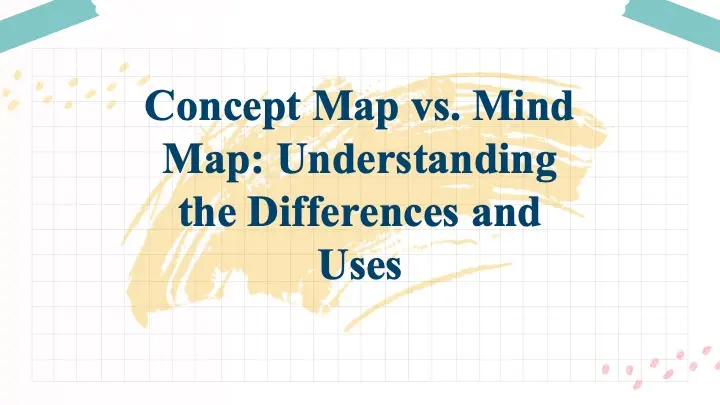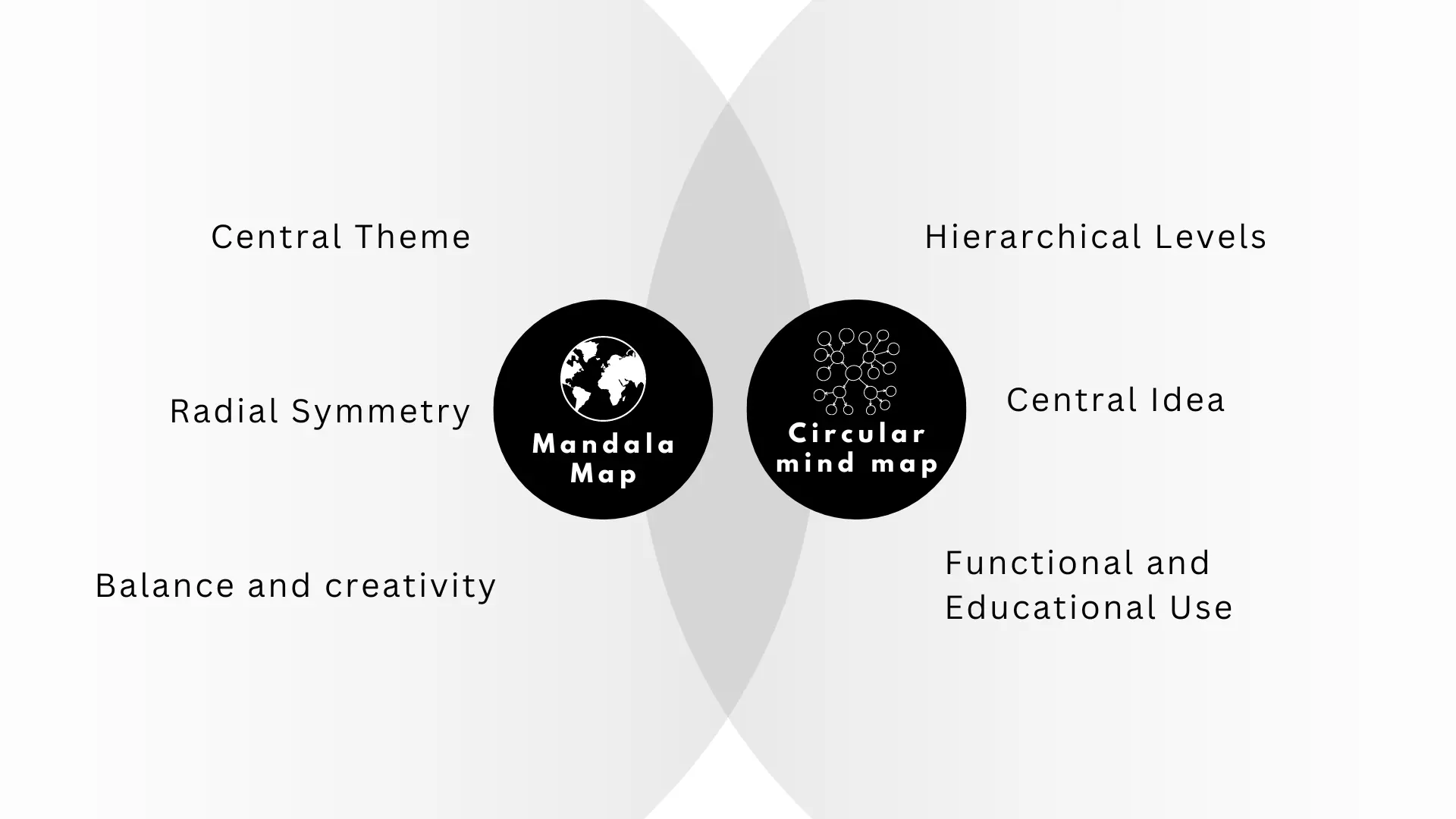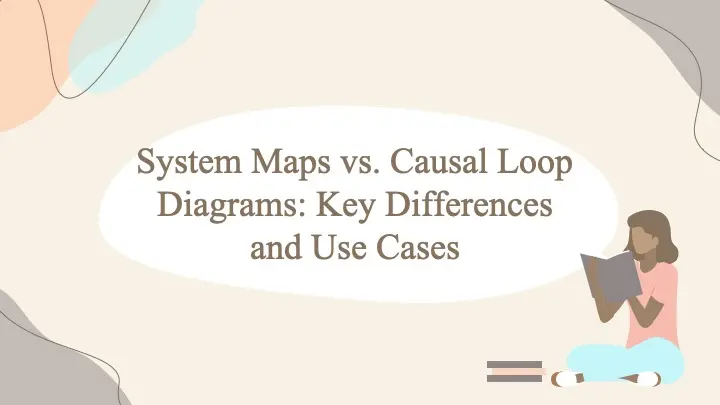When it comes to visualizing and organizing information, concept maps and mind maps are two widely-used tools, each with its own unique strengths. Understanding the definitions and distinctions between these two methods is crucial for choosing the right tool for your needs. This blog will delve into the definitions of concept maps and mind maps, explore their specific uses, and provide guidance on selecting the most appropriate tool for various tasks.
A concept map is a graphical tool that represents knowledge as a network of interconnected concepts. It typically includes:
- Nodes: Representing individual concepts or ideas. Each node is a specific concept or term.
- Links: Connecting nodes to illustrate relationships between concepts. These links show how concepts are related to each other.
- Labels: Describing the nature of the relationships between nodes. Labels often include verbs or phrases that clarify the type of connection (e.g., “causes,” “leads to,” “is a type of”).
Concept maps are designed to depict how various concepts are interrelated within a particular domain of knowledge. They often have a hierarchical structure, with more general concepts at the top and more specific ones below. This hierarchical approach allows for a comprehensive view of how different concepts are connected and supports understanding complex systems or topics.
Characteristics of Concept Maps
- Hierarchical Organization: Concept maps usually have a top-down structure where broader concepts are placed at the top, and more detailed concepts are arranged below them.
- Cross-Links: They often include cross-links that show relationships between concepts at different levels, providing a more integrated view of the knowledge.
- Focus on Relationships: Concept maps emphasize the relationships between concepts, making them ideal for exploring how different elements of a system or topic interact.
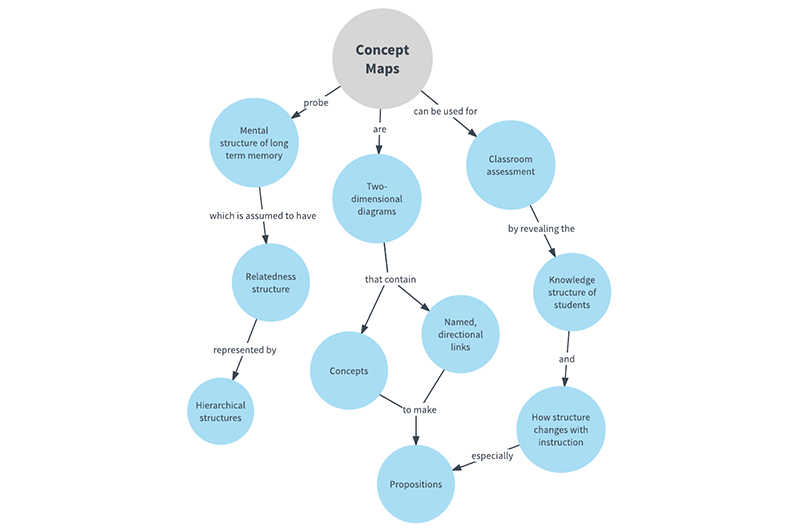
Image from:Top Hat Blog
A mind map is a visual tool used to organize information around a central concept. It features:
- Central Node: The main idea or topic, positioned at the center of the map. This central node represents the primary theme or subject.
- Branches: Extending outward from the central node, representing related ideas or subtopics. Each branch represents a main category or key point related to the central theme.
- Sub-Branches: Further breakdowns of each branch, detailing additional aspects or specific details related to the main categories.
Mind maps are designed to capture and structure ideas in a radial, free-flowing manner. The layout encourages creative thinking and helps visualize the connections between different ideas. Mind maps are often used for brainstorming, planning, and note-taking, allowing users to explore and organize information dynamically.
Characteristics of Mind Maps
- Radial Structure: Mind maps radiate out from a central node, with branches and sub-branches extending in all directions. This structure reflects the natural flow of ideas and allows for flexible expansion.
- Visual and Colorful: Mind maps often use colors, images, and symbols to enhance visual appeal and aid in memory retention.
- Emphasis on Creativity: Mind maps support creative thinking by allowing users to capture and organize ideas in a non-linear, free-form way.
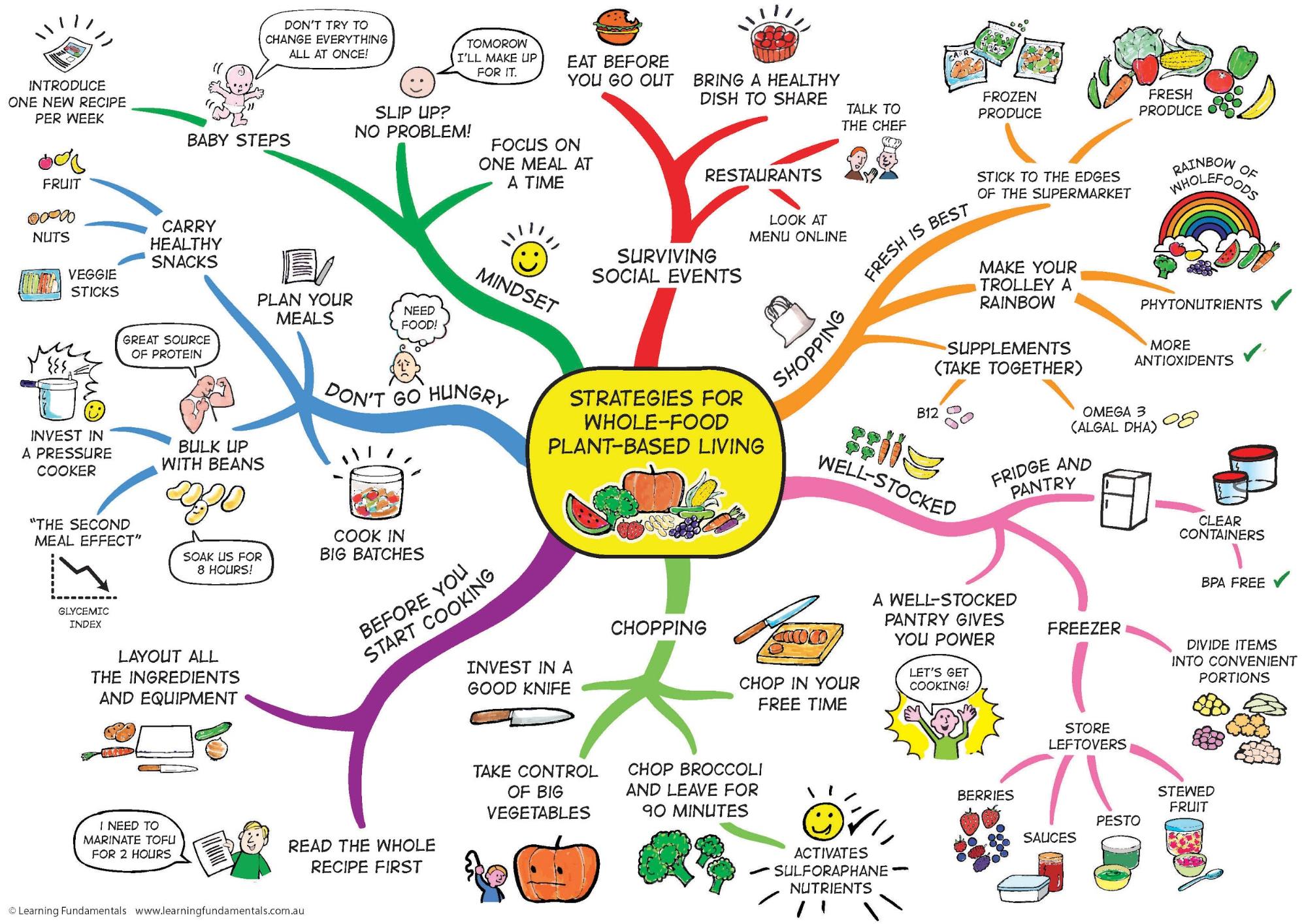
Image from:Monday Blog
Key Differences Between Concept Maps and Mind Maps
1. Structure and Layout
Concept Maps:
- Hierarchical and Networked: Concept maps often have a hierarchical structure where concepts are organized into levels, with more general ideas at the top and more specific ones below. They also show a network of connections between concepts, illustrating various relationships.
Mind Maps:
- Radial and Free-Form: Mind maps have a radial structure, with the central concept in the middle and related ideas branching out in all directions. The layout is more flexible and can grow organically as new ideas are added.
2. Purpose and Use
Concept Maps:
- Detailed Relationships: Concept maps are used to illustrate detailed relationships between concepts. They are useful for complex subjects where understanding how various concepts interrelate is crucial.
- Educational Tools: They are often employed in educational settings to help students and researchers organize and synthesize knowledge. Concept maps are particularly useful for representing systems, processes, and structures.
Mind Maps:
- Idea Generation and Organization: Mind maps are ideal for brainstorming sessions and organizing ideas around a central theme. They help capture creative ideas and explore different aspects of a topic in a non-linear way.
- Personal and Professional Use: They are frequently used for personal planning, project management, and note-taking. Mind maps are great for organizing tasks, setting goals, and visualizing ideas in a more dynamic way.
3. Complexity and Detail
Concept Maps:
- Complex and Detailed: Concept maps tend to be more detailed and complex, reflecting the intricate relationships between multiple concepts. They are particularly useful for breaking down complex topics into more manageable parts and understanding the broader context.
Mind Maps:
- Simple and Visual: Mind maps are generally simpler and focus on capturing and organizing ideas visually. They are less concerned with the detailed relationships between concepts and more with the structure of ideas around a central theme.
4. Flexibility and Adaptability
Concept Maps:
- Structured Flexibility: While concept maps have a defined structure, they can be adapted to show various types of relationships and connections. They are useful for creating detailed models and frameworks that can be adjusted as new information emerges.
Mind Maps:
- Creative Flexibility: Mind maps offer more creative freedom and can easily expand as new ideas emerge. They are highly adaptable and can be used in various contexts, from personal brainstorming to professional project planning.

Image from:MungFali
Applications of Concept Maps and Mind Maps
1. Educational Settings
Concept Maps:
- Curriculum Design: Educators use concept maps to design and structure curricula. By mapping out main topics and subtopics, they can ensure that the curriculum is comprehensive and logically organized.
- Study Aid: Students use concept maps to summarize and connect knowledge, making it easier to review and retain information.
Mind Maps:
- Note-Taking: Students use mind maps to take notes during lectures, capturing key points and their relationships around a central topic.
- Exam Preparation: Mind maps help students organize their study material and identify connections between different concepts, aiding in exam preparation.
2. Business and Project Management
Concept Maps:
- Strategic Planning: Businesses use concept maps to visualize goals, objectives, and strategies, helping to understand the steps required to achieve them.
- Process Mapping: Concept maps are used to outline and analyze business processes, identifying inefficiencies and areas for improvement.
Mind Maps:
- Project Planning: Mind maps assist in breaking down projects into tasks, setting deadlines, and organizing resources in a visual manner.
- Meeting Agendas: They help create and follow meeting agendas, ensuring that all important topics are covered and discussed.
3. Research and Development
Concept Maps:
- Research Framework: Researchers use concept maps to organize their research questions, hypotheses, and findings, showing how they relate to each other.
- Literature Review: Concept maps help in structuring a literature review by visualizing how different studies and theories are interconnected.
Mind Maps:
- Idea Generation: During brainstorming sessions, mind maps capture and organize ideas, facilitating creative thinking and exploration of new concepts.
- Innovation: They help visualize new product features or development strategies, fostering innovation and creative problem-solving.
4. Personal Development
Concept Maps:
- Goal Setting: Concept maps are used to outline personal goals, identifying the steps and resources needed to achieve them.
- Problem Solving: They help analyze personal challenges by mapping out potential solutions and their implications.
Mind Maps:
- Daily Planning: Mind maps assist in organizing daily tasks and priorities, making it easier to manage time and responsibilities.
- Personal Projects: They help plan and track personal projects, such as home improvement or hobby-related activities, by visualizing tasks and milestones.

Image from:Zen Flowchart

Image from: VENNGAGE
1. For Detailed Analysis
If you need to analyze complex information and understand how various concepts interrelate, concept maps are the better choice. They offer a detailed and structured approach to visualizing relationships and frameworks.
2. For Brainstorming and Planning
For brainstorming and organizing ideas around a central theme, mind maps are more effective. Their radial structure supports creative thinking and helps capture and organize information dynamically.
3. For Educational Purposes
In educational contexts where detailed understanding and organization are crucial, concept maps provide a more structured approach. They are ideal for summarizing and connecting knowledge in a coherent manner.
4. For Personal Organization
For personal use, such as planning tasks or managing projects, mind maps offer a flexible and engaging way to handle information. They help with organizing ideas and tracking progress in a visually appealing manner.

Image from:abrigatelapelicula

Image from:StartupNation
Conclusion
Both concept maps and mind maps are valuable tools for organizing and visualizing information, each serving distinct purposes and tasks. Concept maps excel in representing complex relationships and detailed frameworks, making them suitable for educational and research applications. Mind maps are ideal for brainstorming, planning, and personal organization, offering a more flexible and creative approach to managing ideas. By understanding the definitions, differences, and applications of each, you can select the right tool to effectively process and manage information, enhancing clarity, efficiency, and success in your endeavors.
.DHf_86pa_fvIJu.webp)

